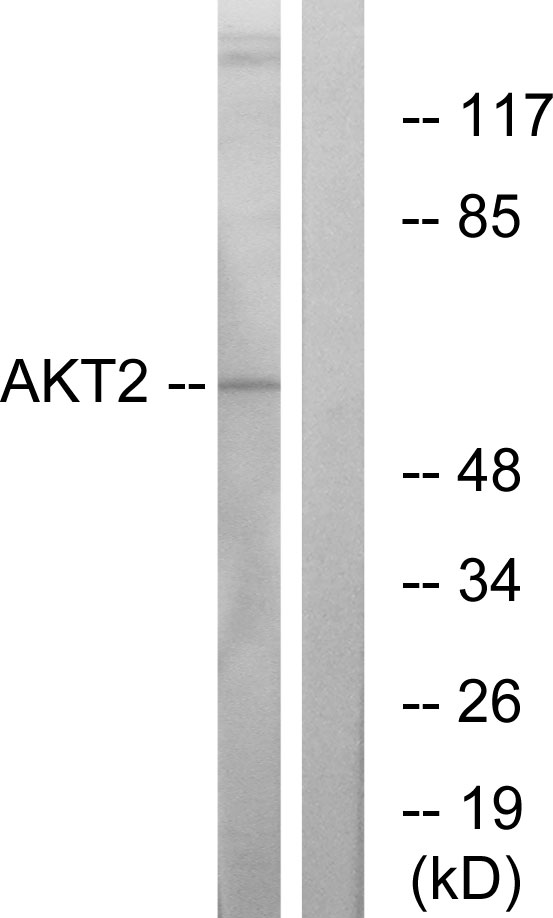AKT2 antibody
GTX111612
ApplicationsImmunoFluorescence, Western Blot, ImmunoCytoChemistry, ImmunoHistoChemistry, ImmunoHistoChemistry Paraffin
Product group Antibodies
ReactivityHuman
TargetAKT2
Overview
- SupplierGeneTex
- Product NameAKT2 antibody
- Delivery Days Customer9
- Application Supplier NoteWB: 1:1000-1:10000. ICC/IF: 1:100-1:1000. IHC-P: 1:100-1:1000. *Optimal dilutions/concentrations should be determined by the researcher.Not tested in other applications.
- ApplicationsImmunoFluorescence, Western Blot, ImmunoCytoChemistry, ImmunoHistoChemistry, ImmunoHistoChemistry Paraffin
- CertificationResearch Use Only
- ClonalityPolyclonal
- Concentration0.65 mg/ml
- ConjugateUnconjugated
- Gene ID208
- Target nameAKT2
- Target descriptionAKT serine/threonine kinase 2
- Target synonymsHIHGHH, PKBB, PKBBETA, PRKBB, RAC-BETA, RAC-beta serine/threonine-protein kinase, PKB beta, RAC-PK-beta, murine thymoma viral (v-akt) homolog-2, protein kinase Akt-2, protein kinase B beta, putative v-akt murine thymoma viral oncoprotein 2, rac protein kinase beta, v-akt murine thymoma viral oncogene homolog 2
- HostRabbit
- IsotypeIgG
- Protein IDP31751
- Protein NameRAC-beta serine/threonine-protein kinase
- Scientific DescriptionThis gene is a putative oncogene encoding a protein belonging to a subfamily of serine/threonine kinases containing SH2-like (Src homology 2-like) domains. The gene was shown to be amplified and overexpressed in 2 of 8 ovarian carcinoma cell lines and 2 of 15 primary ovarian tumors. Overexpression contributes to the malignant phenotype of a subset of human ductal pancreatic cancers. The encoded protein is a general protein kinase capable of phophorylating several known proteins. [provided by RefSeq]
- ReactivityHuman
- Storage Instruction-20°C or -80°C,2°C to 8°C
- UNSPSC12352203
References
- Vazquez-Mellado MJ, Aguilar C, Rocha-Zavaleta L. Erythropoietin protects neuroblastoma cells against etoposide and vincristine by activating ERK and AKT pathways but has no effect in kidney cells. Life Sci. 2015,137:142-9. doi: 10.1016/j.lfs.2015.07.022Read this paper




![ICC/IF analysis of PANC-1 (left) and HeLa (right) cells using GTX83257 AKT2 antibody [1B6]. Green : AKT2 Blue: DRAQ5 fluorescent DNA dye Red: Actin filaments](https://www.genetex.com/upload/website/prouct_img/normal/GTX83257/GTX83257_20170912_ICCIF_w_23061322_582.webp)
![ICC/IF analysis of COS7 cells transiently transfected with AKT2 plasmid using GTX84908 AKT2 antibody [4H7].](https://www.genetex.com/upload/website/prouct_img/normal/GTX84908/GTX84908_1285_ICCIF_w_23061420_653.webp)